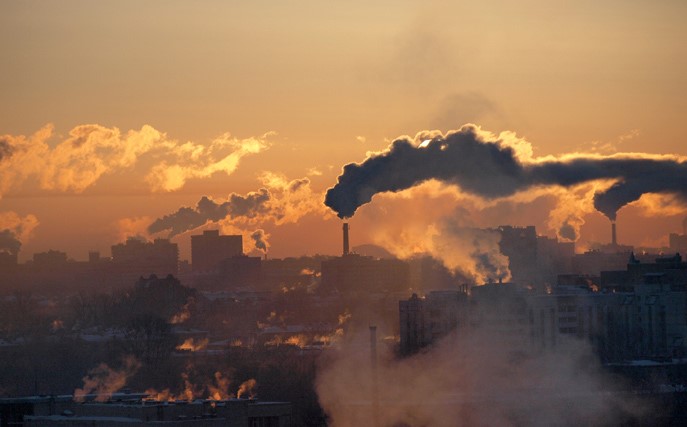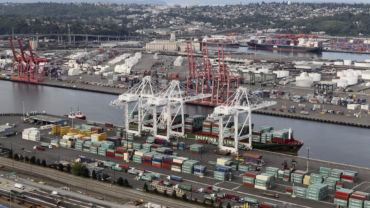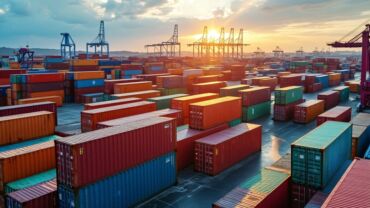What does the EU's carbon emission pricing rules and border tax mean for importers and exporters and their global trade professionals?
The European Union’s regulatory regime on environmental, social & governance (ESG) issues, particularly on carbon and sustainability, is the most comprehensive in the world. From encouraging decarbonization, to legislating ESG in the financial services industry, and requiring companies to report on ESG commitments and measurements, the E.U. regional authority seeks to provide a regulatory framework for the world to adopt as a standard.
This also remains true for its commitment to decarbonization of imports into the region called the Carbon Border Adjustment Mechanism (CBAM). It is a regulation that establishes a fair price on carbon emitted during the production of carbon-intensive goods that are at risk for carbon leakage — such as cement, iron and steel, aluminum, fertilizers, electricity, and hydrogen — that are entering the E.U. To put it simply, it is a tariff that will be imposed on certain types of carbon-intensive products that are imported into the E.U.
Implementation will begin in October, and the first annual report that importers into the E.U. would need to provide under CBAM is due in January 2024. And further plans exist to expand the list of carbon-intensive products over time.
CBAM is a part of a larger commitment to decarbonization
The goal of CBAM is to complement the E.U. emissions trading system (ETS) that operates on the cap-and-trade principle. Under the system, a cap is set on the total amount of greenhouse gases emitted by the energy sector, manufacturing industry, aircraft operators, or other industries. Within the cap, operators can buy or receive tradable emissions allowances, with the price set to incentivize lowering carbon emissions and investing in low-carbon technology.
CBAM focuses on imports into the E.U. whereas the ETS prioritizes goods that are produced within E.U. borders. Any exporter that is selling goods into the E.U. and whose goods are being imported will be impacted, if they fall within the parameters of CBAM.
The E.U. designed CBAM to equalize the carbon impact between producers of carbon-intensive goods outside of the E.U. and producers of carbon-intensive goods within the E.U., which is governed by the ETS. For example, producers of cement located outside of the E.U. could go to other jurisdictions, which have lower standards for carbon emissions. By instituting the CBAM, the cost of production of cement eventually making it to the E.U. as imports are equalized.
CBAM works by offering importing companies in the E.U. an acceptable allowance of carbon emissions. When the allowable amount is exceeded, requirements dictate the purchase of CBAM certificates, which are in line with those from the ETS system. The cost of the additional certificates is the tariff because they increase the cost of production for goods.
The requirement to purchase additional certificates to cover carbon allowances incentivizes manufacturers and others to invest in lower carbon technology or to change behaviors because at some point, the costs will exceed the competitive prices at which buyers of good are willing to pay.
Key steps to compliance are known, but questions remain
To comply with these regulations, companies based in the E.U. declare their carbon emissions based on their production in the E.U. on a quarterly basis, reporting under the ETS. To comply with the CBAM, they must also include the carbon emissions of their suppliers outside of the E.U. for those imported goods that are covered under the regulation. This means that exporters into the E.U. of covered products will be part of the process to ensure compliance. Emission data to reported under the regulation will need to be provided by exporters and suppliers to their E.U. customers, so understanding the regulatory requirements goes beyond just E.U. importers.
Although there may not be answers to every question yet, there are steps companies can take to prepare, including:
-
-
- First, both importers and exporters must determine what, if any, products they have that are part of the carbon-intensive products outlined in the first phase of CBAM rules and design their process for collecting and reporting that information. This step is usually completed through an impact assessment that can allow importers to figure out what products are covered under CBAM and also where the functional ownership of the CBAM compliance process resides internally.
- Next, once E.U. importers have confirmation that products fall under the CBAM regulation, identifying the products’ countries of origin and understanding the volume coming from each country is critical. This will be important to understand the possible cost impact.
- Finally, the reporting process for how data on carbon emissions is going to be collected and reported needs to be mapped and designed. This is important to both the E.U. importer for reporting purposes, and for the exporter to E.U. customers who will be responsible for providing the emissions data to their client for reporting.
-
At the same time, answers to key questions remain outstanding. One of them, which is not clear within the regulation, is determining what is the most effective way for companies to capture the carbon emissions information on their products. Although the regulation does provide the formulas for determining emissions (and E.U. defaults are an option if actuals are not available), this will be a challenge for most companies.
Global trade software helps exporters and importers track compliance by tracking and storing all kinds of data points and can include those to enable adherence to deforestation standards or greenhouse gas emissions at the product level. For CBAM, the global trade management can include built-in alerts that advise when the product is subject to CBAM. Additional features are likely to follow as more CBAM guidelines are made available, and companies communicate their needs.
CBAM-like regulations in other jurisdictions are on the horizon, to be sure, but will take time to implement those. It is no secret that the E.U. is usually the world leader in environmentally friendly regulation. Already there are similar laws under discussion in the United States, for example, yet, how soon the U.S. will move forward is still unknown. At the same time, manufacturers, importers, and other interested parties can expect to see similar legislative acts in other jurisdictions that will be designed to follow the E.U.’s lead.







